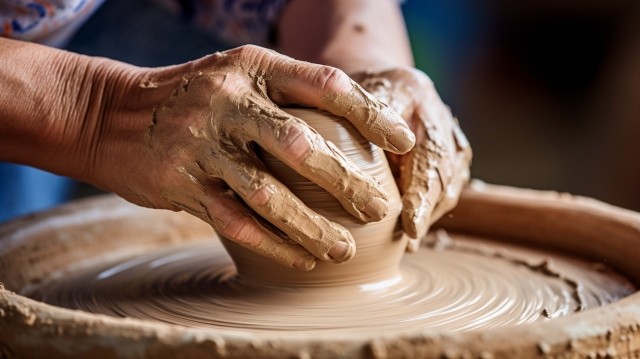News
2025.08.21
Columns
Understanding the Ceramic Production Process: From Clay to Tableware

Bowls and plates that grace our dining tables every day may seem ordinary at first glance, but each piece of Japanese ceramic tableware is the result of numerous steps and the skilled hands of artisans. Comfortable to hold, pleasant on the lips, and enhancing the presentation of food—ceramics represent both tradition and craftsmanship.
In this article, we will walk through the essential stages of the pottery production process, tracing the journey from raw clay to finished tableware.
Table of Contents
1. Preparing the Clay
2. Shaping the Form
3. Drying
4. Bisque Firing
5. Glazing
6. Main Firing in the Kiln
7. Completion and Quality Inspection
8. Conclusion: Breathing Life into Clay
Preparing the Clay
The foundation of every ceramic piece lies in the clay. Different clays are used depending on the type of ware: porcelain typically uses kaolin (pulverized feldspar rock), while pottery relies on more clay-rich soils. The clay is refined to remove impurities, then its moisture and plasticity are carefully adjusted. Finally, it is aged to achieve the ideal consistency for shaping.
Shaping the Form
There are several methods of shaping in the ceramic production process:
-
Wheel Throwing: The traditional method where artisans hand-shape clay on a rotating wheel, showcasing fine craftsmanship.
-
Slip Casting: Liquid clay is poured into plaster molds, ideal for complex forms and larger-scale production.
-
Slab Forming: Clay is rolled into sheets and cut into shapes, particularly suited for plates and flatware.
Drying
Once shaped, pieces must be thoroughly dried. Insufficient drying can cause cracking or warping during firing. This step ensures that the initial form is stabilized before moving to the kiln.
Bisque Firing
After drying, the ware undergoes bisque firing at around 800–900°C. This process hardens the body and makes it porous, enabling glaze application. It also improves strength, preparing the ware for the next stage.
Glazing
Glaze acts as a glassy coating, giving ceramics their characteristic shine, color, and water resistance. Techniques include dipping, pouring, and spraying. The type, thickness, and method of glaze application all significantly influence the final look and texture, making it a critical stage in pottery production.
Main Firing in the Kiln
The main firing takes place in a kiln at 1,200–1,300°C. Here, the glaze melts into a glass-like surface, and the final strength, color, and finish of the tableware are determined. Even slight variations in firing temperature, duration, or flame circulation can alter the results, highlighting the importance of the artisan’s expertise and intuition.
Completion and Quality Inspection
After cooling, each piece is carefully inspected by hand. Checks are made for warping, cracks, or glaze inconsistencies to ensure only products that meet high quality standards are shipped to market.
Conclusion: Breathing Life into Clay
The creation of Japanese ceramics is a fusion of natural materials, human skill, and the power of fire. Each piece embodies not only time and effort but also the artisan’s wish for the user’s enjoyment.
When you next hold a piece of Japanese tableware, take a moment to imagine the journey it has made—from humble clay to a crafted work of art in your hands.
Imoto Sangyo supplies a wide variety of products, including Japanese tableware, kitchenware, cutlery, agricultural tools, and household goods. For inquiries regarding our export and import business, please contact us through our inquiry page.
Please note: We do not sell directly to individuals.
Category
Archive

